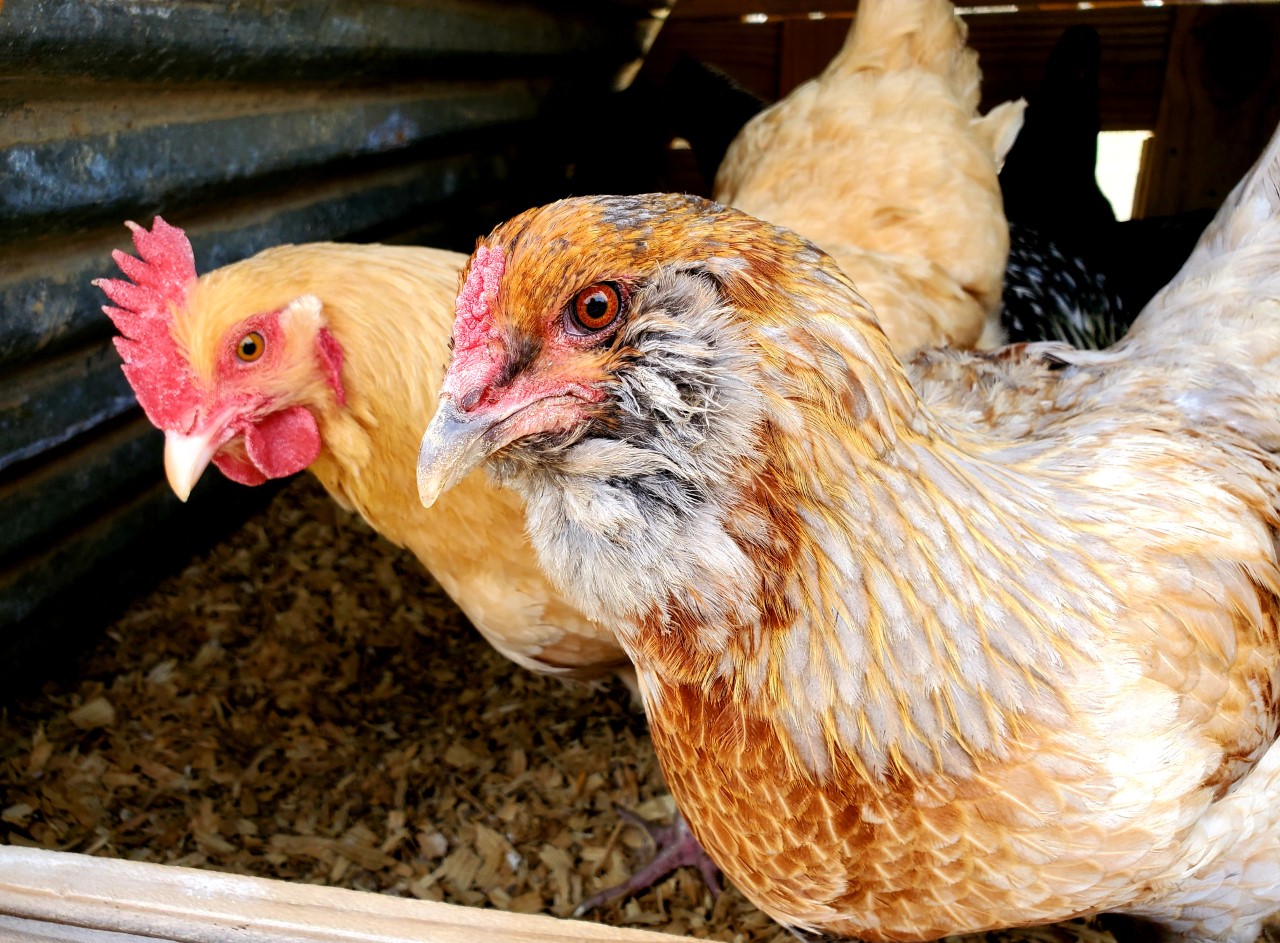Here at Wildrose Hill, we raise several different breeds, and we’re constantly expanding. A few will always be my personal favorites, though, and I’ll tell you why!
Easter Eggers
Easter eggers aren’t “officially” a breed. There’s a lot of confusion in the chicken world about them, actually! Easter eggers are a hybrid with at least one of the parent breeds carrying the blue egg gene. Some of the most popular chicken “breeds” are actually hybrids, including ISA Browns, Cinnamon Queens, and Amberlinks. Easter eggers are usually a cross between a blue-egg-laying breed such as Ameraucana or Crested Legbar and another high production breed, which may or may not lay blue eggs. Easter eggers aren’t guaranteed to lay blue eggs. In fact, part of the reason they got their name is because they can lay various shades of blue and green, with the off chance of tan eggs. At Wildrose Hill, we only use hens that lay blue eggs, to give their offspring a better chance of laying those beautiful blue eggs we all want in our egg baskets!
Easter eggers are very friendly and inquisitive birds. Though they come in just about every color of the rainbow, they’re easily spotted by their full, feathered beards, lack of wattles, and small pea combs. They’re excellent layers of eggs in a wide range of colors, with most hens laying over 250 large eggs per year. Most of my older hens, who are entering their third year of laying, still faithfully lay an egg a day! They free range well, and they might decide to take matters into their own hands without the proper enclosure! Smooth feathered varieties fly very well for their size, and may need their wings clipped if your fences are less than 6′ tall.
We breed both the smooth feathered and the frizzled variety. Hatching eggs from Wildrose Hill have about a 25% chance of hatching frizzled chicks. Frizzled Easter eggers are easily distinguishable from their smooth feathered hatchmates at about two weeks of age.
Silkies
There is no breed quite like a silkie! Anyone who has seen a silkie would have to agree. Silkies have downy, soft feathers that feel more like fur than feathers. They have a quiet and docile personality, making them excellent pets and easy to handle for children. They are a bantam breed, meaning that they’re significantly smaller than large breed chickens. Silkies weigh around 2.5 to 3 pounds depending on gender, with roosters weighing more than hens.
Silkies are a crested breed, with a rounded poof of feathers on the tops of their heads. Sometimes, this crest blocks their vision, which means silkies can be bullied if they are housed with non-crested birds. The best companions for silkies are other silkies, or similar crested breeds like Polish. Silkies have dark-colored skin and eyes, with an extra toe on their feathered feet. There are two main types of silkie; bearded and non-bearded. Bearded varieties have full, soft beards and no visible wattles. Non-bearded varieties have small wattles, and no visible beards. Both varieties of silkie are available in a wide range of colors, including but not limited to: black, white, paint, partridge, buff, blue/splash, and more! We raise bearded blue/splash silkies, but in the future we hope to add more varieties of these wonderful little birds!
Silkies are well-known as one of the broodiest breeds around. A broody chicken is one that will sit on eggs, eliminating the need for an incubator to artificially hatch chicks. Silkie hens will sit on their own eggs, eggs from other chicken breeds, duck eggs, turkey eggs, rocks… You name it, a silkie hen will try (and probably has tried) to hatch it! Because of their broody tendencies, however, silkies tend to produce fewer eggs per year. While a hen is sitting on a nest of eggs, they will not produce any more eggs, to ensure that their clutch of chicks hatches at the same time. Silkie hens usually produce around 120 small, cream-colored eggs per year.
Bantam Cochins
Bantam cochins are the smallest breed at Wildrose Hill currently, but their personalities are huge. They’re very social birds. If the hens don’t greet me from across the yard, the rooster will with his squeaky bantam crow. In fact, the chicks are nearly impossible to photograph because they’re too curious about the camera! Bantam cochins make excellent pets and do well in smaller backyards and coops where larger breeds wouldn’t thrive. You can expect three to four eggs per week from a bantam cochin hen. While they aren’t the best egg layers, they are dependable and generally more cold weather hardy than other breeds.
Another name for a bantam cochin is a pekin bantam. The American bantam cochin is different than the European pekin, however, in that the pekin is classified as a true bantam with no large fowl counterpart. Bantam cochins are compact, docile birds with single combs, heavily feathered feet, and a very short, rounded tail. They are available in a massive range of colors. In fact, the American Bantam Association recognizes 19 different colors, and there are even more “project” colors that have not yet been accepted into the ABA. These include black, red, buff, white, partridge, blue, barred, birchen, columbian, silver and gold laced, and many, many more. Unrecognized color varieties include mottled, bobtail, mille fleur, and others.
At Wildrose Hill, we currently have mille fleur and blue mille fleur bantam cochins. The literal meaning of mille fleur is French for “a thousand flowers.” The term “flower” refers to the small white spot at the tip of every feather. The base color of every feather is a light gold, with a black stripe and a white spot at the tips of the feathers. The end result is a bird that resembles a field of wildflowers, the perfect fit for our farm!
